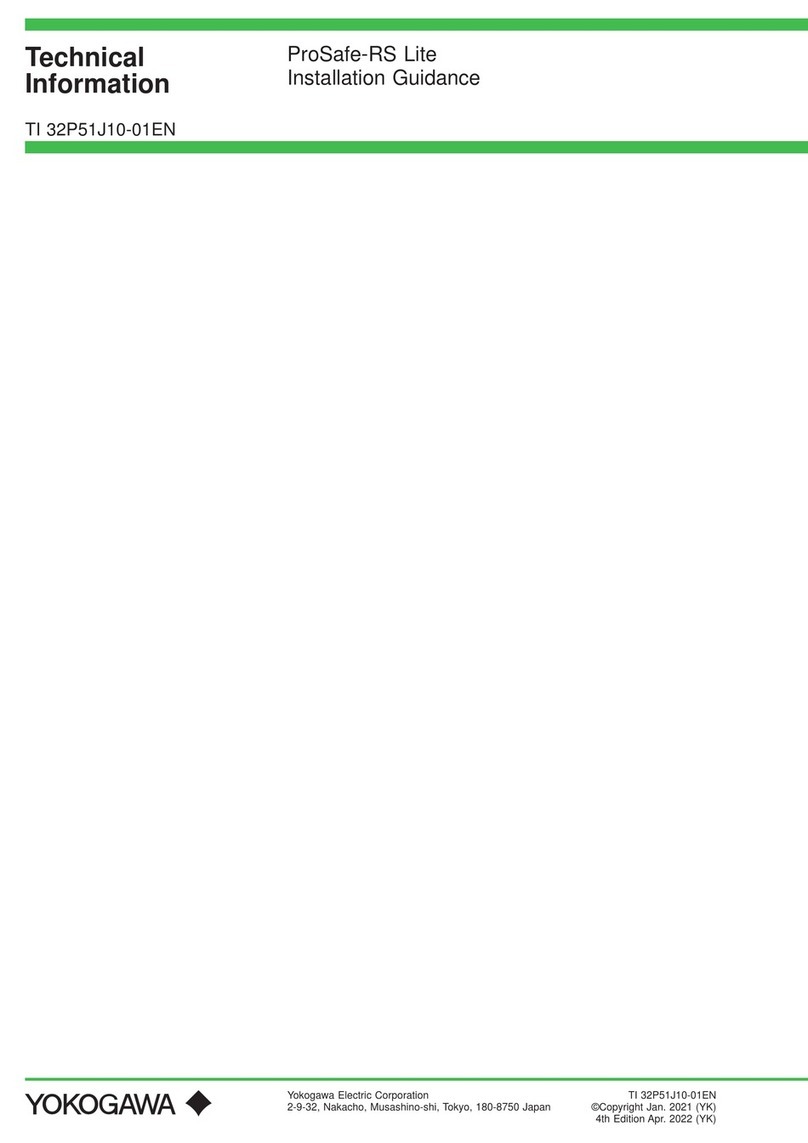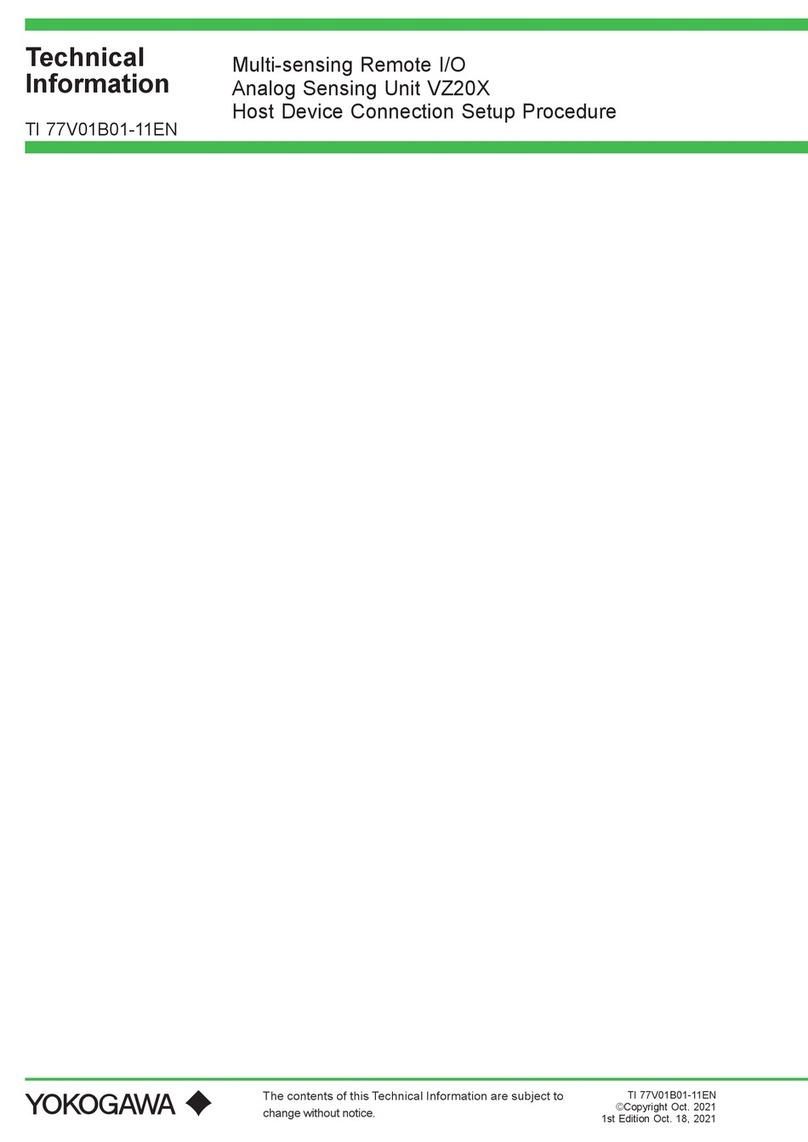
Toc-1
TI 33Q01J30-01E
CENTUM
Explosion Protection
CONTENTS
TI33Q01J30-01E37thEdition
Introduction ..............................................................................................................i
Safety Precautions..................................................................................................ii
Trademarks ..............................................................................................................v
1. Overview of Explosion Protection .........................................................1-1
1.1 Primary Explosion Protection and Secondary Explosion Protection ........1-1
1.2 Explosion Protection Standards.....................................................................1-2
1.3 ClassicationofExplosionProtectionEquipment.......................................1-3
1.4 SymbolsThatIndicateSpecicationsofExplosionProtection..................1-8
2. CENTUM and Explosion Protection Instrumentation ..........................2-1
2.1 ExplosionProtectionStandardsthatCENTUMhasAcquired.....................2-1
2.2 ExplosionProtectionConstructionthatI/ODevicesofCENTUM
Comply...............................................................................................................2-2
2.3 OverviewofConnectingCENTUMtotheDevicesInstalledina
Hazardous Area.................................................................................................2-3
3. ExplosionProtectionInstrumentationinZone2/Division2 ...............3-1
3.1 Non-Incendive...................................................................................................3-1
3.1.1 CSANI (CSANon-Incendive)............................................................3-1
3.1.2 FM NI (FM Nonincendive)................................................................3-13
3.2 Ex “ec”, Type “n” ............................................................................................3-24
3.2.1 ATEX Ex “ec”,ATEX Type “n” ..........................................................3-24
3.2.2 IECEx Ex “ec” , IECEx Type “n”.......................................................3-24
3.2.3 ECAS-Ex Ex “ec” .............................................................................3-25
3.2.4 UKEX Ex “ec”, UKEX Type “n”.........................................................3-25
3.2.5 KCs Ex “ec”......................................................................................3-25
3.2.6 CCC-Ex/NEPSI Type “n”..................................................................3-26
4. Intrinsic Safety Explosion Protection Instrumentation ....................... 4-1
4.1 IntrinsicSafetyExplosionProtectionInstrumentationUsingBarrier
base plates.........................................................................................................4-2
4.1.1 Intrinsic Safety Explosion Protection ofATEX/UKEX Standard ........4-2
4.1.2 Intrinsic Safety Explosion Protection of IEC Standard ......................4-3
4.1.3 Intrinsic Safety Explosion Protection of FM Standard.......................4-4
4.1.4 Intrinsic Safety Explosion Protection of CSAStandard.....................4-5
4.1.5 Intrinsic Safety Explosion Protection of EAC Ex................................4-6
Nov. 10, 2022-00





























